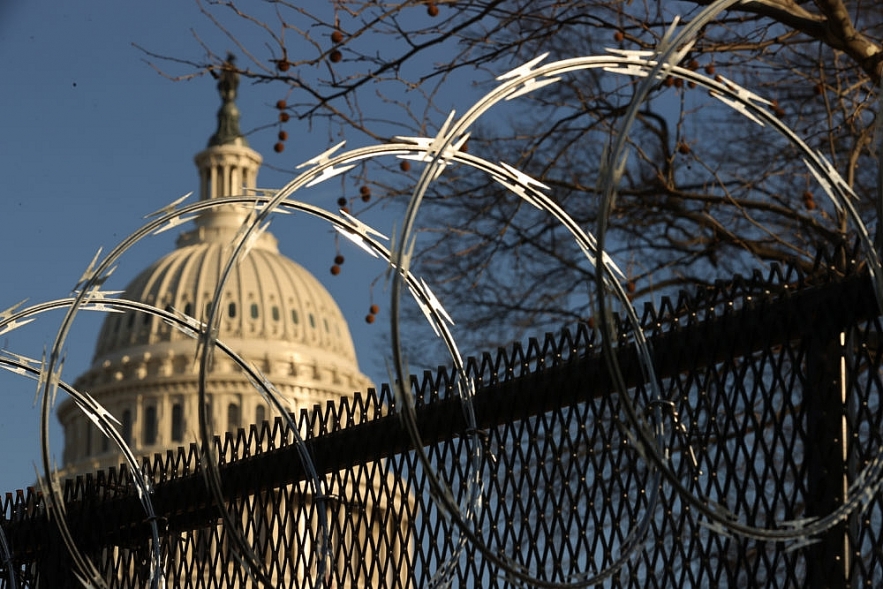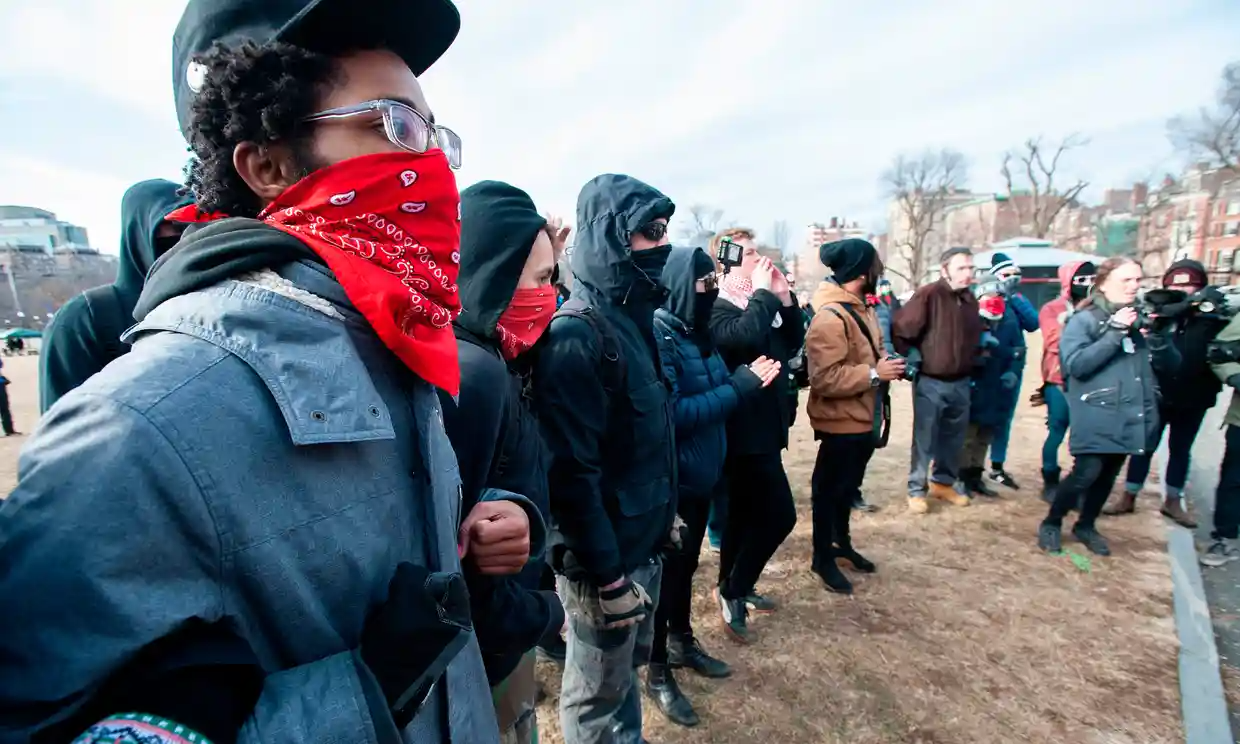The Full Text of the New U.S. Intelligence Classified Report that Warns Domestic Terrorism
 |
| The Full Text of the New U.S. Intelligence Classified |
The New U.S. Intelligence Classified Report, released by the Office of the Director of National Intelligence (ODNI), comes as the Justice Department and Congress have launched investigations into the violent breach of the Capitol that left five dead, including a police officer.
The report arrived on the same day DHS Secretary Alejandro Mayorkas called domestic violent extremism the "greatest" and "most persistent" threat to the homeland.
The full classified report – described by an ODNI official as a "fact-based analysis" that may inform strategy and policy development – was sent to White House and Congress Tuesday, according to an ODNI official.
The report separates domestic violent extremists into different groups, including racially or ethnically motivated extremists, anti-government extremists, animal rights and environmental extremists and abortion-related extremists.
Intelligence agencies found that racially or ethnically motivated violent extremists and militia violent extremists presented the "most lethal threats." Racially motivated extremists were determined to be the most likely to instigate mass-casualty attacks against civilians, according to the unclassified summary. In contrast, the threat assessment found militia violent extremists typically target law enforcement and government personnel and facilities.
White supremacists built networks of support outside the U.S. in some cases, the unclassified summary revealed, adding a "small number" have travelled abroad to "network with like-minded individuals."
The intelligence community’s report did not reveal much new about domestic extremists, but it represents the government’s most authoritative assessment of the threat to help guide policy decisions. It defined domestic violent extremists as people operating in the U.S. without direction or inspiration from foreign terrorist networks.
The report concluded that racially and ethnically motivated extremists pose the “most lethal” threats. They are also the most likely to conduct “mass-casualty attacks against civilians,” it said.
Here are the full text of the Intelligence Classified Report:
Date: March 17, 2021
"Unclassified Summary of Assessment on Domestic Violent Extremism"
The Office of the Director of National Intelligence (ODNI), the Department of Justice (DOJ), and the Department of Homeland Security (DHS) today released an unclassified summary of the joint comprehensive threat assessment on domestic violent extremism.
OFFICE OF THE DIRECTOR OF NATIONAL INTELLIGENCE
(U) Domestic Violent Extremism Poses Heightened Threat in 2021 01 March 2021
UNCLASSIFIED 2 UNCLASSIFIED (U) Executive Summary
(U) The IC assesses that domestic violent extremists (DVEs) who are motivated by a range of ideologies and galvanized by recent political and societal events in the United States pose an elevated threat to the Homeland in 2021. Enduring DVE motivations pertaining to biases against minority populations and perceived government overreach will almost certainly continue to drive DVE radicalization and mobilization to violence. Newer sociopolitical developments—such as narratives of fraud in the recent general election, the emboldening impact of the violent breach of the US Capitol, conditions related to the COVID-19 pandemic, and conspiracy theories promoting violence—will almost certainly spur some DVEs to try to engage in violence this year.
(U) The IC assesses that lone offenders or small cells of DVEs adhering to a diverse set of violent extremist ideologies are more likely to carry out violent attacks in the Homeland than organizations that allegedly advocate a DVE ideology. DVE attackers often radicalize independently by consuming violent extremist material online and mobilize without direction from a violent extremist organization, making detection and disruption difficult.
(U) The IC assesses that racially or ethnically motivated violent extremists (RMVEs) and militia violent extremists (MVEs) present the most lethal DVE threats, with RMVEs most likely to conduct mass-casualty attacks against civilians and MVEs typically targeting law enforcement and government personnel and facilities. The IC assesses that the MVE threat increased last year and that it will almost certainly continue to be elevated throughout 2021 because of contentious sociopolitical factors that motivate MVEs to commit violence.
(U) The IC assesses that US RMVEs who promote the superiority of the white race are the DVE actors with the most persistent and concerning transnational connections because individuals with similar ideological beliefs exist outside of the United States and these RMVEs frequently communicate with and seek to influence each other. We assess that a small number of US RMVEs have traveled abroad to network with like-minded individuals.
(U) The IC assesses that DVEs exploit a variety of popular social media platforms, smaller websites with targeted audiences, and encrypted chat applications to recruit new adherents, plan and rally support for inperson actions, and disseminate materials that contribute to radicalization and mobilization to violence.
(U) The IC assesses that several factors could increase the likelihood or lethality of DVE attacks in 2021 and beyond, including escalating support from persons in the United States or abroad, growing perceptions of government overreach related to legal or policy changes and disruptions, and high-profile attacks spurring follow-on attacks and innovations in targeting and attack tactics.
(U) DVE lone offenders will continue to pose significant detection and disruption challenges because of their capacity for independent radicalization to violence, ability to mobilize discretely, and access to firearms.
(U) Scope Note (U) As part of the Office of the Director of National Intelligence (ODNI) mission to lead and support Intelligence Community (IC) integration and deliver insights, the ODNI has leveraged IC components to provide a comprehensive intelligence assessment on domestic violent extremists (DVEs). This assessment was prepared under the auspices of the DNI—in consultation with the Attorney General and Secretary of Homeland Security—and was drafted by the National Counterterrorism Center (NCTC), Federal Bureau of Investigation (FBI), and Department of Homeland Security (DHS), with contributions from the Central Intelligence Agency (CIA) and the Defense Intelligence Agency (DIA). The FBI and DHS lead the IC’s counter DVE missions —and are thus positioned to bring domestic collection to bear in understanding and addressing this issue—while the NCTC supports them. Other IC elements, such as CIA and DIA, contribute their unique accesses or expertise, including on ties that foreign elements have to DVEs. All agencies are mindful of the duty to respect privacy, civil rights, and civil liberties and to act within the authorities granted to them as they seek to put together as complete an intelligence and analytic picture as is possible.
(U) For the purposes of this assessment, the IC defines a DVE as an individual based and operating primarily in the United States without direction or inspiration from a foreign terrorist group or other foreign power and who seeks to further political or social goals wholly or in part through unlawful acts of force or violence. This assessment does not evaluate the actions of individuals engaged solely in activities protected by the First Amendment or other rights secured by the Constitution of the United States.
(U) IC Categories of Domestic Violent Extremists
 FACTS about ANTIFA – alleged terrorism by Trump? FACTS about ANTIFA – alleged terrorism by Trump? FACTS about ANTIFA: Antifa, the anti-fascist political movement that Donald Trump proposed the US to designate it “Terrorist Organization”, was called out on a recent ... |
 What is Charlie Hebdo attack in France? What is Charlie Hebdo attack in France? The terrorism that killed 17 people in January 2015 leave hundreds dead in the years to come and reshape everyday life in France. Charlie Hebdo ... |


























